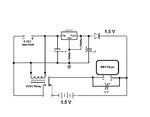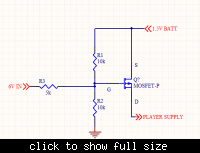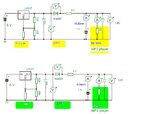holabr
Member level 2

I'm planning to use an old MP3 player to provide music on hold for a small office PBX. Since the player must be restarted if it loses power, I would like to have a simple battery backup. If I use the circuit shown and the house power is maintained and provides sufficient amperage for the player will the battery remain charged? Is there any chance of causing the battery to overheat and/or explode? I am planning to use a standard 1.5 volt alkaline battery.









